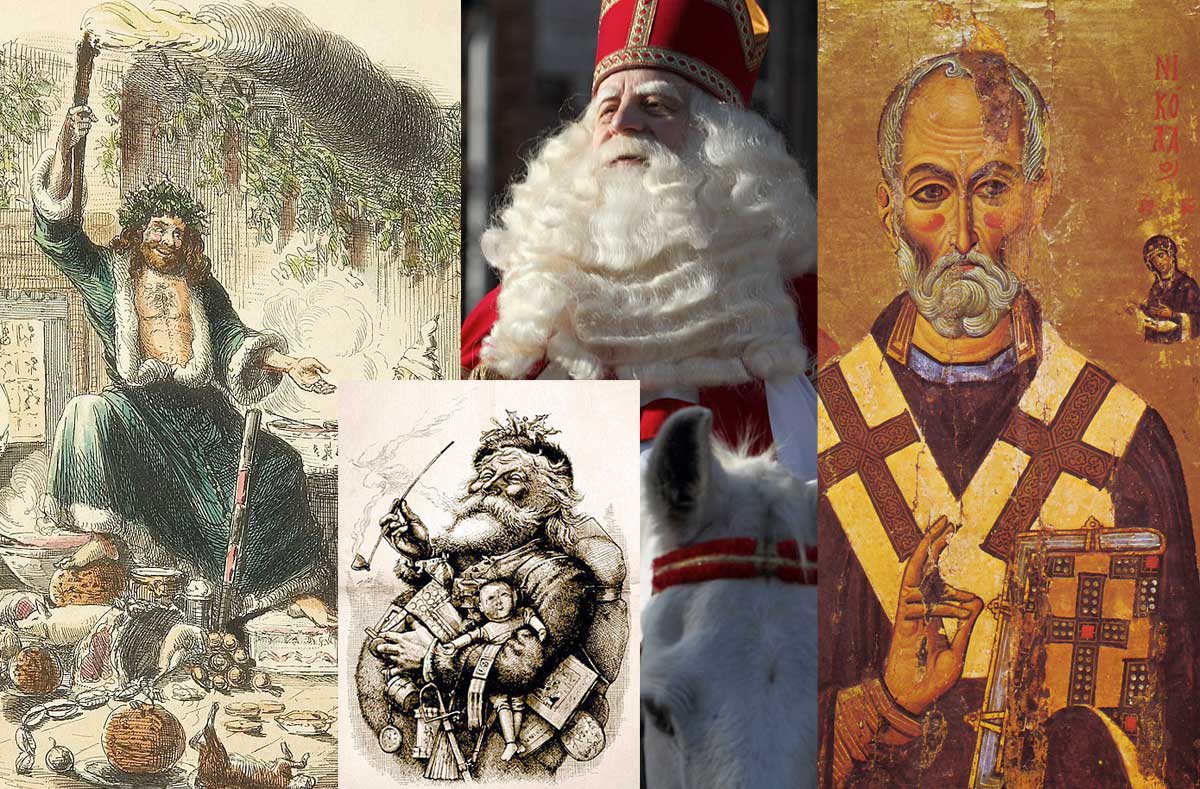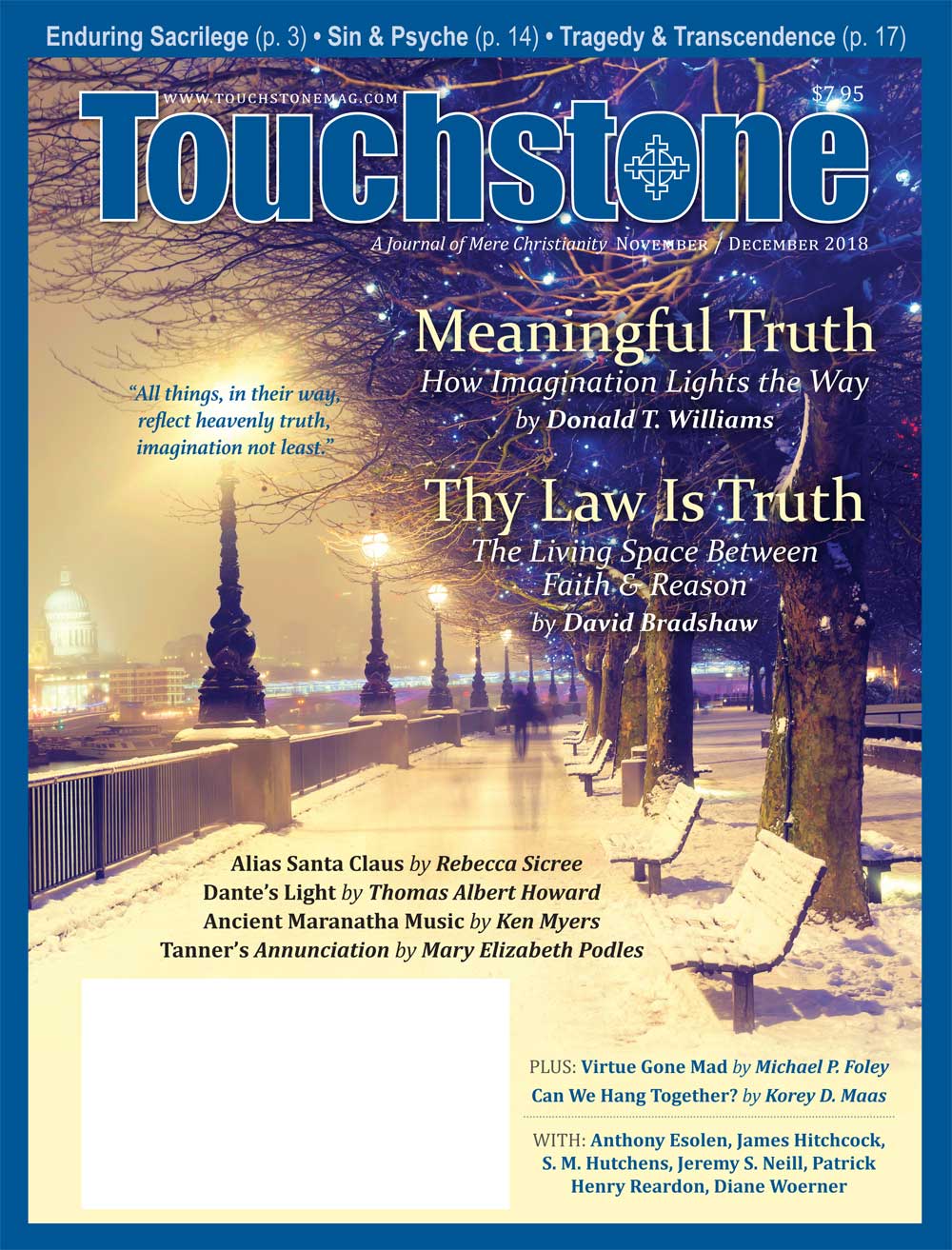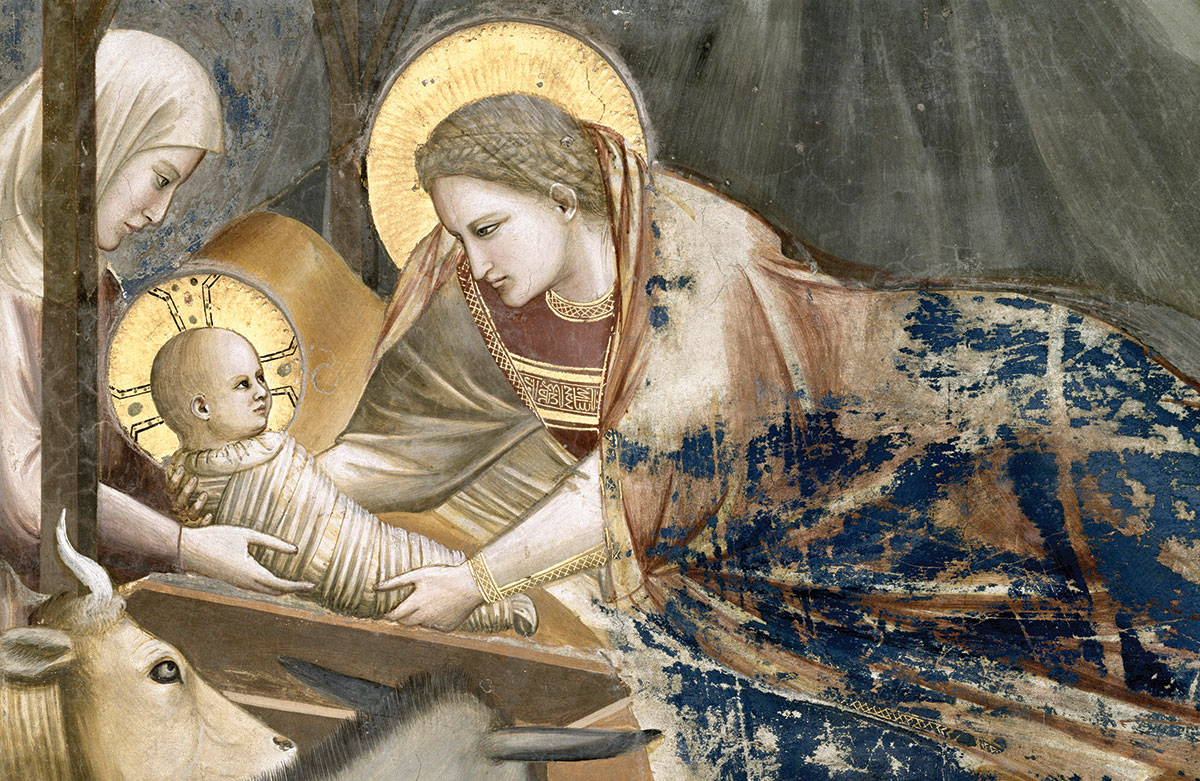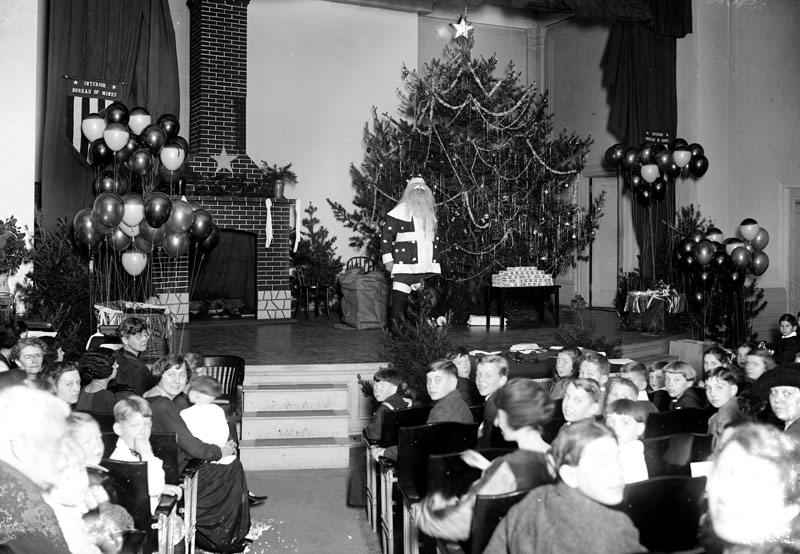View
Alias Santa Claus
Rebecca Sicree on Childhood Encounters with a Christmas Icon
It was after dark on Christmas Eve, and my younger sister Jessie and I were arguing. I was telling her that Santa Claus did not exist. She was stubbornly refusing to believe me.
There was a knock at the door.
"Girls, come here," my dad called, with an odd expression on his face. "Someone wants to see you." So we went to the door.
And there he was.
"Ho! Ho! Ho!" he chortled. "Merry Christmas! I was at your neighbor's party and thought I'd stop by. What would you little girls like for Christmas?"
Jessie's face lit up with excitement. She said that she wanted a Chrissy doll with hair that grew. I stood and stared. Our guest seemed to think I was afraid of him. Finally, I stammered that I wanted a Chrissy doll, too. "I'll see what I can do," he assured us and left. Jessie turned on me with a look of fierce triumph.
"See?" she said. "I told you so!"
My parents burst out laughing.
Both of us had Chrissy dolls the next morning.
I was very, very confused.
Faith Becoming Culture
My parents deliberately told us little about Santa Claus. "We didn't need to," my dad explained years later. "We watched you pick up the beliefs all by yourselves." Pope St. John Paul II once said, "Faith must become culture." If this is true, then Santa Claus has to be the most successful colonization of culture that Christianity has ever achieved. Even non-Christians in Japan know about Santa Claus, though I suspect some of them confuse him with Colonel Sanders, since their traditional Christmas dinner is Kentucky Fried Chicken.
Just because a tradition is successful does not mean, of course, that it is good, or true, or beautiful.
The Good . . .
It's hard to argue that Santa, the personification of generosity, is not good. He inspires real people to give real gifts, to charities as well as children. What few people realize is that the story of Santa Claus drastically changed the celebration of Christmas in America for the better, making it child-centered and family-centered. The turning point was the publication of "A Visit from Saint Nicholas" by Clement Clarke Moore in 1823. Before then, Christmas in New York was more like New Year's Eve.
And before then, Christmas in Pennsylvania was more like Halloween. Costumed people went door to door: mummers putting on skits, Callithumpians blaring tin horns, and Beltznickels scaring children who didn't know their prayers. The Beltznickel, or "Fur Nicholas," was like a cross between a mountain man and a deranged Sunday school teacher. He visited after dark, spoke gibberish, and tossed candy and nuts on the floor—then whipped any child who grabbed them without saying his prayers. "A Visit from the Beltznickel" would have been a very different poem:
'Twas the night before Christmas, and all through the house,
All the children were hiding, each still as a mouse,
Underneath a small table or footstool or chair
In fear that the Beltznickel soon would be there.
The Beltznickel was one example of a tendency to turn Saint Nicholas into a circuit-riding judge who rewarded good and punished evil. Since a saintly bishop on his white horse wouldn't go around spanking little children, tradition sometimes gave him an assistant who would—and sometimes it changed the saint entirely into a Beltznickel.
Santa Claus, on the other hand, does not dispense punishments. When was the last time anyone got coal in his stocking? Our friend Randy remembers his parents trying to enlist Santa as an enforcer. His father, who worked for the phone company, installed an old-fashioned, hand-cranked, wall-mounted telephone that really rang. This, he said, was a hotline to the North Pole. All year long, whenever someone misbehaved, Randy's mother would crank up the phone, let it ring, then say, "Santa Claus? We have a problem. . . ."
Eventually, the hotline was rerouted to the Goodwill thrift store. "That was actually worse," Randy remembered. "Santa would only fail to bring us new toys; Goodwill would take away the ones we already had. Once all my toys were in garbage bags, ready to be taken away, before my mom relented."
Santa isn't a very good enforcer if a thrift store is more frightening. But maybe that's good. The message of rewarding good and punishing evil is important when you are explaining the Last Judgment, but it is misleading at Christmastime. After all, the greatest Christmas gift—the Christ Child himself—was given to us not because we were good but before we were good. Santa imitates that kind of divine goodness much better than the Beltznickel does.
The True . . .
Is the story of Santa Claus true? If we define him metaphorically, as the New York Sun did in 1897, we can say with it, "Yes, Virginia, there is a Santa Claus. He exists as certainly as love and generosity and devotion exist. . . ."
But children are literalists. Even parents who define Santa as the personification of Christmas (as the English Father Christmas was before he met Santa) sooner or later have to face the day when a child starts thinking logically about mysteries such as why no zoos have flying reindeer.
Letters from Santa?
My children started having questions about Santa when they received letters from him at our parish school. First-graders all send hand-written letters to Santa, and they all get personal replies. One December Isabel announced, "I got a letter from Santa at school. The letter told me to have my sisters write him their Christmas letters, too."
This shocked Maria. "There must be more than one Santa!" she cried. "Because I already wrote him three letters! And he wrote back, too!" Maria grabbed Isabel's letter and looked it over. "Besides, this letter was written on a computer! Santa doesn't use a computer! You know why? Because there is no electricity at the North Pole, that's why! They have to use oil lamps!"
I knew, however, the real reason Santa used a computer. He used to send letters in his best handwriting, secretly ghost-written by the sixth-graders. This caused a crisis when one boy noticed that Santa's handwriting looked just like the handwriting of his older brother. The North Pole was computerized immediately.
For now, Maria stuck to her theory that there were multiple Santas. "I think Isabel's teacher is one," she concluded, not realizing that her brother Tom in sixth grade was a more likely suspect. "But I don't think she has even been to the North Pole."
It was the beginning of the end.
Dad's Secret Identity
Not every child is skeptical. Isabel's friend Colette believed in Santa Claus until she was ten. Finally her father took her and her oldest brother aside and told them that he was Santa Claus. Colette, who had loved Santa, was sad at first, but then was excited to know such a big secret—so excited that she had to tell someone. So she and her brother cornered their younger brother.
"Guess what?" she began, "Dad is—" Then she stopped. Her father had told them not to tell their younger brothers. But she had to say something now, so she plunged ahead.
"Dad is—Dad is a superhero! His name is—is Independence Man!" Catching her oldest brother's eye, she detailed Dad's powers and adventures, all made up on the spot. And their younger brother believed them. (They had also convinced him once that they were intergalactic exchange students. She was a much more convincing older sister than I was.)
Becoming Santa Claus
Some kids feel betrayed when they find out that Santa Claus isn't literally real. Our friend Peg had a good way of handling this. When her oldest son informed her that Santa Claus wasn't real, she corrected him.
"Yes, he is real," she said, "and his real name is Saint Nicholas. Saint Nicholas is real. He could do a miracle from heaven and deliver gifts to all the children in the world in a single night if he wanted to. But he doesn't. How saints really work is to get us to do the good works for them. Now that you know the secret, it is your job to be part of spreading the love of a saint."
Then she gave her son some money and let him buy Christmas gifts, anonymously, for an unknown family their pastor had chosen. From that time on, whenever one of her children "discovered" that Santa wasn't real, he joined in the work. He "became" Santa, too.
"People do good in the name of Santa Claus," Peg added, "that they would never do otherwise."
The Beautiful . . .
If a story is beautiful because it makes what is good and true appealing, then the story of Santa Claus is certainly beautiful to children and those who still think like them. It was so appealing that as it spread around the world from America, other cultures changed, too. Dark characters from folklore who roamed abroad at midwinter, from trolls to household elves to immortal goats, were converted—transformed into white-bearded men in red suits bearing gifts. (For the Yule Goat of Finland, this was a major change.) On dark and stormy winter nights people now thought of a sleigh with flying reindeer, not the demonic Wild Hunt with black riders and hellhounds.
Santa Claus, however, is not popular with everyone. Some people think that Saint Nicholas is stern—and boring—and that Santa Claus is saccharine—and boring. This is because good and evil are harder to portray in art than people think. "Imaginary evil is romantic and varied; real evil is gloomy, monotonous, barren, boring," philosopher Simone Weil wrote. "Imaginary good is boring; real good is always new, marvelous, intoxicating."
The real Saint Nicholas did not become the patron of children because he gave them sermons or gifts. He became their patron because he rescued them. In one legend he saved three girls from being sold into slavery by their own father by throwing gold down the chimney into their stockings. In another legend he saved three boys who had been murdered by an evil innkeeper by bringing them back to life. His real life may be astonishing, but it's hardly boring.
If we did a better job of portraying Saint Nicholas as heroic, perhaps fewer people would be attracted to Krampus, the Austrian goat-demon who follows the saint around, beating and terrorizing people. (Krampus festivals are growing in popularity in Austria and, unfortunately, are spreading to the United States.) At least one writer has picked up the gauntlet: Grant Morrison, who is better known for his Batman comics, wrote a rather graphic graphic novel called Klaus: The Real Story of Santa Claus. Morrison's very macho, superhuman Klaus (his sleigh is pulled by flying wolves) fights the demon Krampus not just to save the good children, but also to save the bad ones.
The real Saint Nicholas—who in another legend punched the heretic Arius for denying the divinity of Christ—would be more likely to behead Krampus (as Morrison's Klaus did) than to go door-to-door with him.
Alias Santa Claus
I like to think of Saint Nicholas as a superhero and Santa Claus as his secret identity. We see an old man with a long beard, a pipe, and a funny hat, driving with a mountain of gifts and showing up at parties to entertain children. As a rule, we see only "his jokes and toys." We don't see him wandering the world, giving heart to the hopeless. We don't see him vanquishing trolls. We don't see him, staff lowered, dispelling black riders on his white horse. We don't see him stand up to horned demons that are wreathed in flames, saying, as Gandalf did, "You shall not pass!"
Yet in reality, all these things the real Saint Nicholas has done—and more.
Rebecca Sicree writes from Boalsburg, Pennsylvania. She and her family attend Our Lady of Victory Catholic Church in nearby State College. She and her husband Andrew have ten children, six of whom are now adults.
subscription options
Order
Print/Online Subscription

Get six issues (one year) of Touchstone PLUS full online access including pdf downloads for only $39.95. That's only $3.34 per month!
Order
Online Only
Subscription

Get a one-year full-access subscription to the Touchstone online archives for only $19.95. That's only $1.66 per month!
bulk subscriptions
Order Touchstone subscriptions in bulk and save $10 per sub! Each subscription includes 6 issues of Touchstone plus full online access to touchstonemag.com—including archives, videos, and pdf downloads of recent issues for only $29.95 each! Great for churches or study groups.
Transactions will be processed on a secure server.
more on Christmas from the online archives
more from the online archives
calling all readers
Please Donate
"There are magazines worth reading but few worth saving . . . Touchstone is just such a magazine."
—Alice von Hildebrand
"Here we do not concede one square millimeter of territory to falsehood, folly, contemporary sentimentality, or fashion. We speak the truth, and let God be our judge. . . . Touchstone is the one committedly Christian conservative journal."
—Anthony Esolen, Touchstone senior editor













